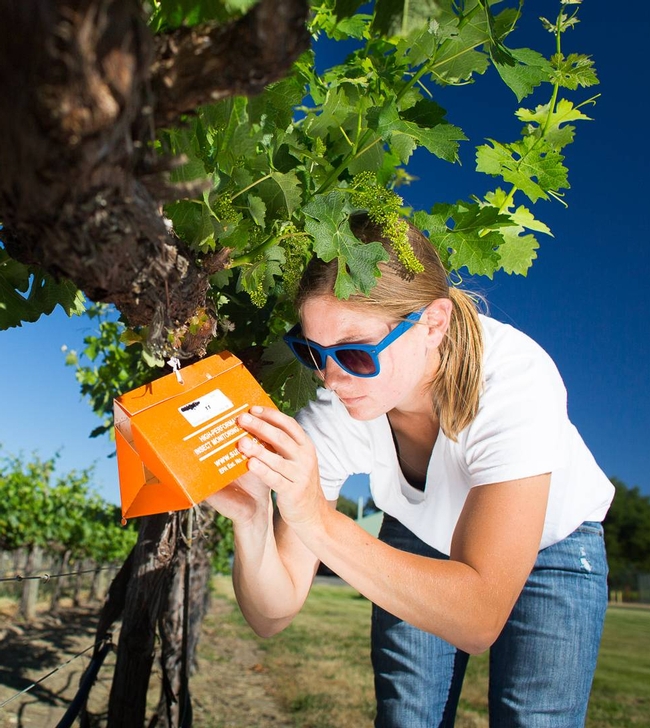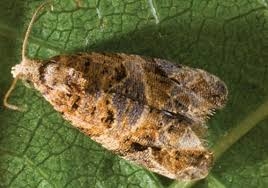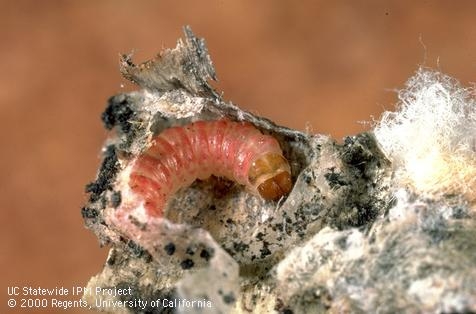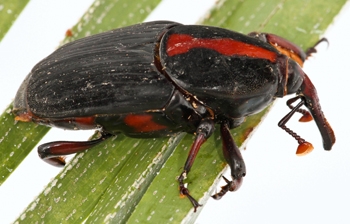
At an invasive species summit last year in Sacramento, UC ANR vice president Glenda Humiston and California Department of Food and Agriculture secretary Karen Ross convened scientists, government representatives and volunteers to pool intellectual resources and plot a strategy for protecting agricultural crops, natural resources, cityscapes and residential neighborhoods from invasive species.
“We know that collectively, we have the tools and expertise to prevent invasive species from entering California, spreading and becoming established,” Humiston said.
Below are three examples of pests that entered California, and with research, collaboration and treatment, were eradicated from the state.
|
European grapevine moth European grapevine moth, a native of Mediterranean Europe, was detected for the first time in the Americas in Chile in April 2008. The following year, European grapevine moth was found in California's iconic wine region, Napa Valley. From there it spread to nine other California counties, as far south as Fresno. UC ANR academics responded rapidly — working with public and private partners and international scientists — to develop a pest management program that relied on deploying pheromone dispensers to disrupt mating and application of carefully timed insecticides. UC ANR academics studied the moth's biology, life cycle, host range and proven management practices. In short order, the moth population plummeted, and eventually the state was declared free of European grapevine moth, lifting a quarantine, enhancing farmers' ability to export their agricultural products, and preserving the communities' economic wellbeing. More info: Growers, scientists and regulators collaborate on European grapevine moth program
|
 European grapevine moth |
|
Pink bollworm of cotton It took 50 years, but the invasive pink bollworm of cotton was declared eradicated in California in 2018. Eradication of pink bollworm was a joint effort by UC Cooperative Extension, USDA's Agricultural Research Service, county agricultural commissioners' offices and California cotton growers. It involved the implementation of integrated pest management techniques, such as planting transgenic cotton, using insect pheromones to disrupt mating, releasing sterile insects to slow reproduction, plowing after each crop to provide host-free periods, and extensive surveying. California cotton growers funded the program by paying an assessment on cotton grown in the state. More info: Pink bollworm UC Pest Management Guidelines |
 Pink bollworm larvae |
|
Red palm weevil In August 2010, arborists removed a dying Canary Island date palm from the yard of a Laguna Beach home and reported finding large black and red striped beetles. The pests were confirmed to be the first record of the destructive red palm weevil in the U.S. Hormone monitoring and visual surveys of other palms in the area confirmed the presence of the pest. Rapid action was taken against the pest by applying pesticides to trees that showed feeding damage to palm fronds. Effective surveying was accomplished by combining hormone attractants and cut pieces of palm trees provided by the California date palm industry. The last live weevil was detected in Laguna in January 2012. After three years passed with no weevil detections in Laguna Beach, USDA-APHIS declared this pest to be officially eradicated in January 2015. More info: Red palm weevil successfully eradicated form California |
 Red palm weevil |